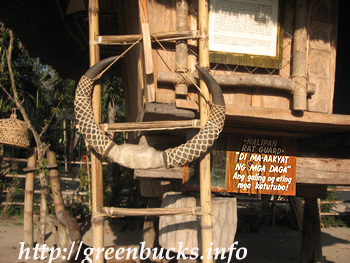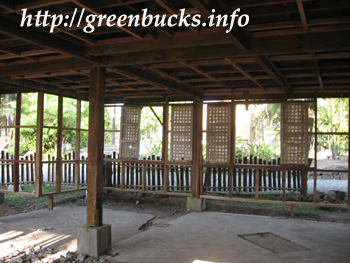Looking at Philippine traditional houses is one way of knowing the culture of the Filipinos.
The Ifugaos had houses built near their fields. They have a distinct house design which keeps the rats from climbing into the house.
The “common” houses of those who farm the lands in the countryside usually has a space under the house. They have a space where eating utensils can be washed and dried, and it is usually called a banggera*. Nope, no like the fancy farmhouse sinks with lovely designs but simple bamboo slats where the water spills on to the ground below. The cooking station was downstairs where food was cooked using cut wood and clay pots. We take turns blowing into a metal tube/pipe so that the fire will be kept alive. At least, it was what I remember with my maternal grandparents house and I wish I have photos.
I also remember that my maternal grandparents’ house was like the picture below and more. Under the house where there was a big space, the onions hang on the ropes. Tobacco leaves for drying were hung my by grandfather. And there is a small hammock which we grandchildren take turns to sit on and rock the afternoons away. Sometimes my grandfather would sit on the swing after a hard day’s work at the farm. Or he can be seen rolling white thin paper to make his own cigars from the dry tobacco leaves.
This space usually has multi-purpose uses.
The Nipa Hut can also be colorful during fiestas, where the signs of festivities like the banderitas** adorn the windows and doors.
A bahay kudo or nipa hut bedecked with fiesta trimmings and signs of festivities.
_______________________________________________________
*banggera – kitchen
**banderitas – trimmings




Pingback: teacherjulie.com » Greenhills Shopping Center Christmas Show